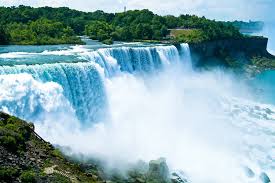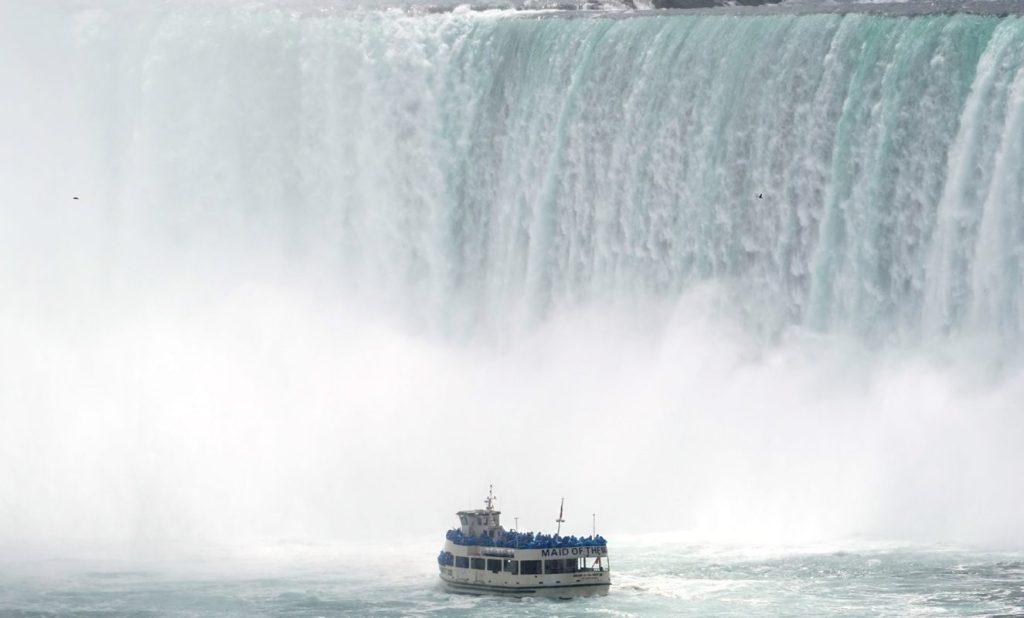INTRODUCTION
When temperatures drop and snow begins to fall, Niagara Falls transforms into one of the most magical destinations in North America. The mighty waterfalls continue to flow beneath layers of ice, creating glistening formations and peaceful mist that make the winter season unforgettable.
For travelers who enjoy cold-weather adventures, Niagara Falls Tours on both the U.S. and Canadian sides offer an unforgettable winter experience. As the air turns crisp and the crowds thin out, the falls reveal a new kind of beauty — frozen mist shimmering in sunlight, snow-covered trees along the gorge, and the soothing sound of rushing water beneath layers of ice.
Winter transforms Niagara Falls into a peaceful wonderland where nature’s power meets quiet calm. Visitors can enjoy scenic viewpoints, illuminated nights, and serene walks through Niagara Falls State Park. With fewer tourists, every moment feels more personal and reflective.
This guide to Niagara Falls Tours in winter includes essential tips for dressing warmly, staying safe, and making the most of your journey. Whether you’re exploring solo, with family, or with friends, the season’s frozen charm ensures a travel experience that’s as comfortable as it is memorable.
1. Why Niagara Falls Tours Are Perfect in Cold Weather
Many travelers believe Niagara Falls is best seen in summer, but Niagara Falls Tours in winter reveal a completely different kind of magic. The crowds disappear, the air turns crisp, and every surface glistens with frost and mist. The peaceful atmosphere lets visitors experience the falls in a calm, dreamlike way — where the frozen beauty of nature takes center stage. Winter truly transforms Niagara Falls Tours into a serene and unforgettable adventure.
As you walk through the park, you’ll see snow-covered trees, icy mist forming delicate crystals on railings, and rainbows appearing in the sunlight. The sound of rushing water mixed with crisp winter air creates an unforgettable scene — peaceful yet powerful.
Moreover, for photographers and nature lovers, winter offers some of the most striking visuals of the entire year.
2. Niagara Falls Tours Understanding the Winter Climate
Winter in Niagara Falls typically runs from December to March. Temperatures often hover between -5°C and -12°C (23°F to 10°F), though wind chill can make it feel colder.
Snowfall is frequent, but the park’s main paths are cleared regularly, so most viewing areas remain accessible. The key is preparation — dress warmly, layer up, and bring waterproof boots.
If you plan your trip on a clear day, the sunlight reflecting on the icy mist will take your breath away.
3. Best Viewing Spots on the U.S. Side
The American side of Niagara Falls provides some of the best winter perspectives. While some attractions close for safety, several stunning spots remain open:
- Prospect Point Observation Tower: Extends over the gorge for panoramic views of the American and Horseshoe Falls. The tower deck often sparkles with ice, adding a magical touch.
- Luna Island: A peaceful viewing area located between the American and Bridal Veil Falls, perfect for up-close winter shots.
- Goat Island: Offers easy walking paths and access to Terrapin Point, where mist freezes on the railings and creates surreal frozen patterns.
- Niagara Falls State Park: Open year-round, offering snow-dusted walkways and viewpoints that remain stunning even on cloudy days.
Each of these areas provides a different angle of the falls, giving travelers the flexibility to enjoy the scenery at their own pace.
4. Beautiful Winter Views on the Canadian Side
The Canadian side is equally breathtaking and ideal for travelers who want wide, full views of all three waterfalls. The Table Rock Welcome Centre and the Niagara Parkway are among the best places to see the falls in their icy glory.
Along the parkway, you can also enjoy views of the frozen river and ice bridges that form naturally in extremely cold weather. The contrast between white snow and turquoise water is striking and picture-perfect.
At night, the falls come alive with colorful lights, transforming the frozen landscape into a glowing masterpiece.
5. How to Stay Comfortable in Cold Weather
Enjoying Niagara Falls in winter is easy if you plan properly. Here are some helpful comfort tips:
- Layer your clothing: Start with thermal innerwear, then a sweater, and top it off with a windproof coat.
- Waterproof boots: Mist and slush can soak shoes quickly, so wear insulated waterproof footwear.
- Gloves and hats: Keep your hands and head warm; body heat escapes fastest from these areas.
- Use hand warmers: They’re small, affordable, and perfect for long walks.
- Stay hydrated: Cold weather often masks thirst, so sip water regularly.
Remember — it’s not about braving the cold, but embracing it with preparation.
6. Must-See Winter Experiences
Even in freezing weather, there’s a lot to explore. Some attractions remain open (without needing any paid services):
- Niagara Falls State Park Walks: Take a peaceful stroll through snow-covered trails with stunning river views.
- Winter Illumination: Every evening, colorful lights dance across the falls, creating an enchanting nightscape.
- Niagara Gorge Lookouts: Capture panoramic views of the icy river and surrounding cliffs.
- Observation Tower Sunsets: The winter sunset over the frozen mist is unforgettable.
Each experience brings a different emotion — from calm reflection to pure awe.

7. Safety and Accessibility Tips
Safety is especially important during the cold season. Here’s what every traveler should know:
- Check weather forecasts before visiting; storms may temporarily close certain paths.
- Walk slowly — some surfaces can be slippery with ice.
- Use railings wherever available.
- Keep devices warm — batteries drain faster in cold temperatures.
- Plan short breaks in indoor areas like the park’s welcome centers.
Accessibility is a priority at Niagara Falls. Many viewpoints and paths on both sides are wheelchair-friendly and maintained throughout the season.
8. Advanced Photography Tips for Winter Travelers on Niagara Falls Tours
Winter photography at Niagara Falls can be magical — here’s how to capture it well:
- Go early or stay late: Morning light reflects off the ice, while evenings highlight the illumination.
- Use lens protection: Mist can quickly fog or freeze on the camera lens.
- Adjust exposure: Snow can confuse your camera’s settings — brighten slightly for true color.
- Capture details: Frozen branches, icy railings, and mist crystals make for stunning shots.
Remember, sometimes the best photo is not the wide view, but a quiet detail that captures winter’s stillness.
9. Planning for Families and Groups for Niagara Falls Tours
Winter doesn’t mean staying indoors — families can safely enjoy Niagara Falls, too. Bring extra scarves for children, keep walks shorter, and stop often to warm up.
Group travelers can plan scenic loops — starting from the State Park, visiting Prospect Point, and ending at the illuminated falls after sunset. It’s calm, affordable, and incredibly rewarding.
Even in cold weather, you’ll find friendly locals, quiet paths, and peaceful spaces perfect for all ages.
10. Reflecting on the Experience
Standing near Niagara Falls in winter is not just about sightseeing; it’s about feeling the rhythm of nature. The sound of rushing water beneath frozen layers, the sparkle of mist in sunlight, and the calm silence of falling snow combine into something deeply peaceful.
For many visitors, winter brings not just beauty, but perspective — a reminder of resilience, balance, and quiet strength.
Conclusion
Winter transforms Niagara Falls into a serene and breathtaking destination, making it ideal for cold-weather travelers. The U.S. and Canadian sides both offer unique perspectives, from snow-dusted cliffs to frozen mist and sparkling ice formations. Fewer crowds allow for peaceful exploration, while illuminated nights create magical experiences. By planning carefully — dressing warmly, following safety tips, and visiting key viewpoints — travelers can fully enjoy the beauty and power of the falls in winter. Best Niagara Falls Tours Canada for Cold-Weather Travelers provide an unforgettable adventure, combining nature’s grandeur with a quiet, reflective, and truly memorable seasonal experience.
FOR MORE INFO, VISIT: NiagaraBusTour
FAQs
1. Can I visit Niagara Falls in January or February?
Yes, both sides stay open with most viewpoints accessible.
2. Does Niagara Falls freeze completely?
No, only the mist and edges freeze — the water keeps flowing beneath.
3. What should I pack for a winter visit?
Warm layers, waterproof boots, gloves, and a hat.
4. Are there fewer tourists in winter?
Yes, which means more peaceful views and shorter wait times.
5. Are the lights on at night in winter?
Yes, nightly illumination happens year-round.
6. Is the Maid of the Mist open in winter?
No, it closes for safety until spring.
7. Are there walking paths open on both sides?
Yes, but some lower trails may be closed due to ice.
8. Can families with children visit safely?
Absolutely — just dress warmly and stay within safe zones.
9. How long should I plan for my visit?
A full day is enough to explore key winter viewpoints.
10. Is photography allowed?
Of course — and winter light creates beautiful natural effects!







